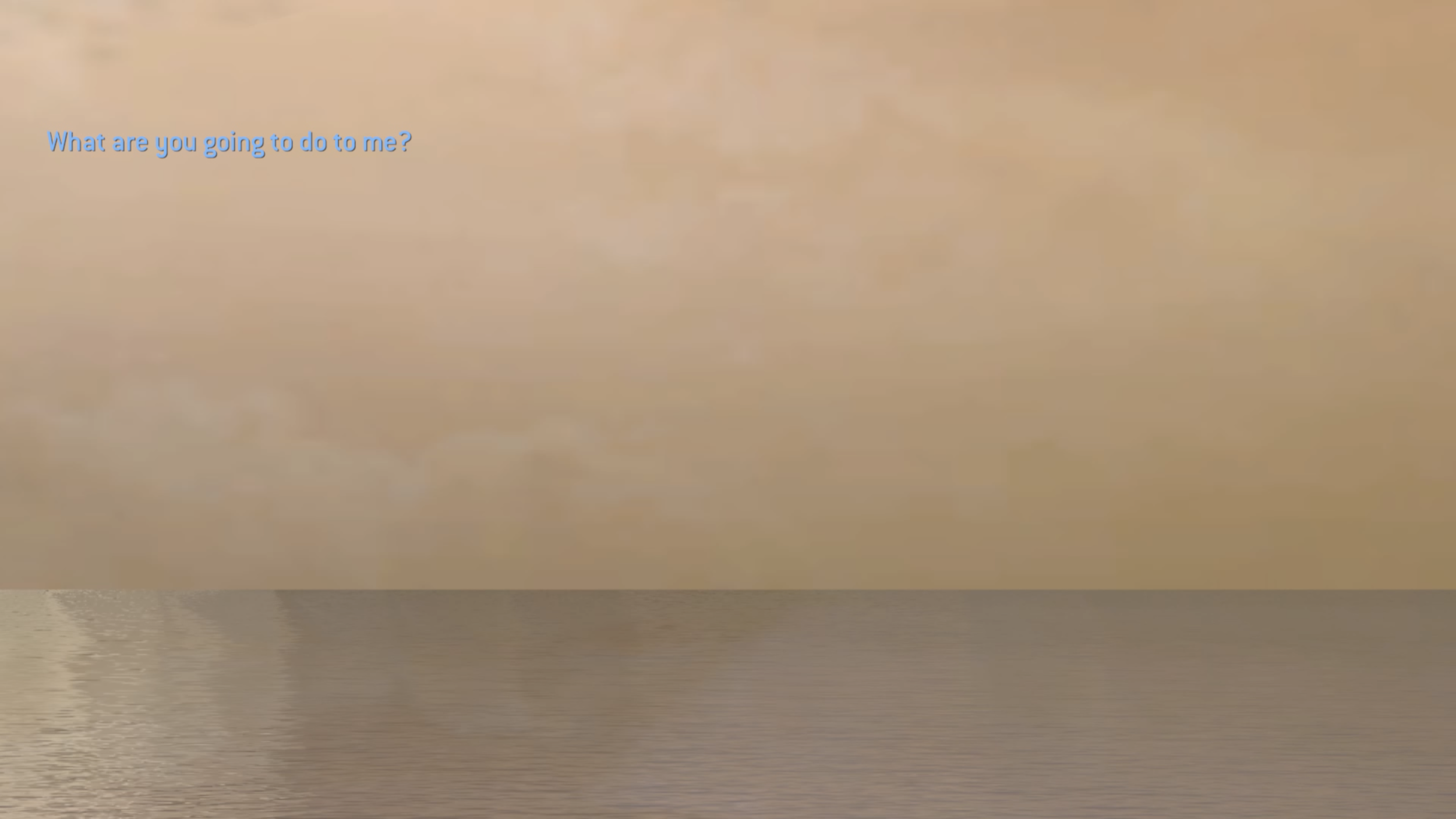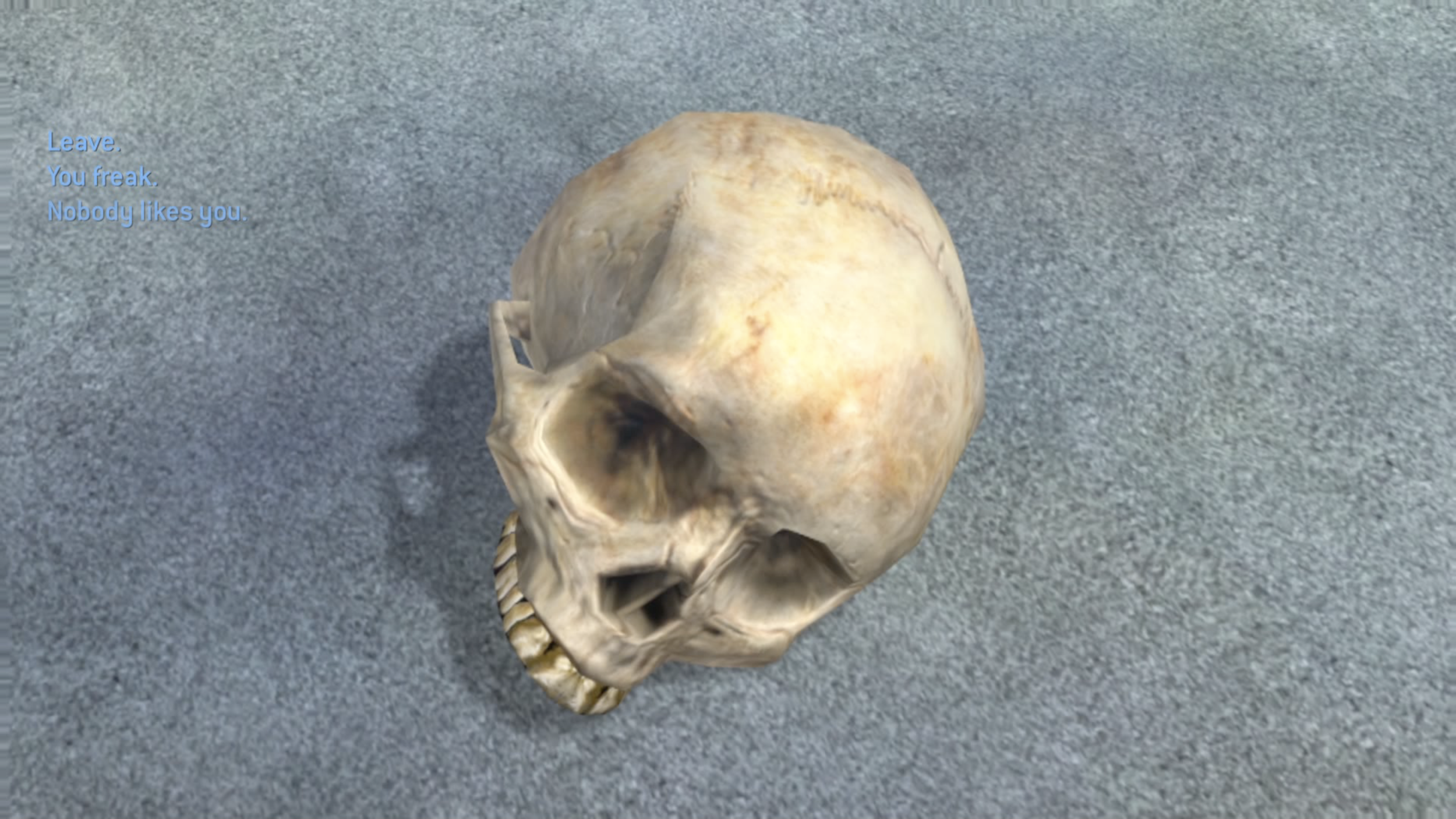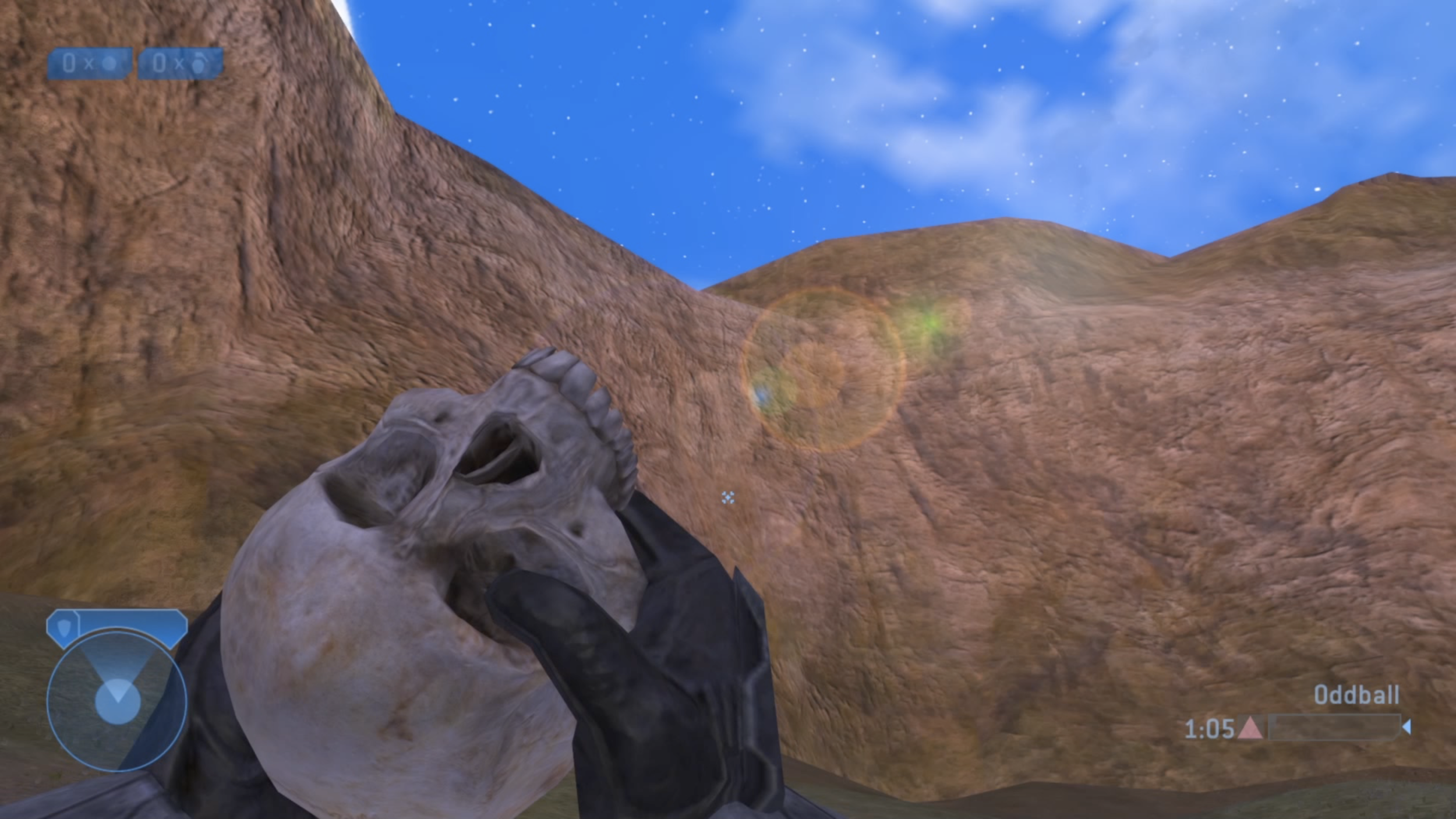carson LYNN
THE WEIRD, THE EERIE, THE UNREAL
MAY 25-30 2020/25-30 MAGGIO 2020 (ONLINE)
ODDBALL
machinima/digital video, color, 3’ 28”, 2019. United States of America.
“Il 6 maggio 2015, la critica culturale e videoludica queer Aevee Bee ha pubblicato il saggio “I love my untouchable virtual body” nel quale descrive alcune tecniche per eludere gli attacchi nel videogioco Bloodborne, annullando i danni inflitti al giocatore in una finestra temporale incredibilmente breve. Nel suo articolo, Bee sogna di possedere tale “superpotere” anche nella vita reale: “Se potessi condensare il dolore in una frazione di secondo, sarei invincibile”. Sfortunatamente, in Halo 2 il nostro avatar non può evitare danni. I corpi virtuali di Halo sono stati progettati per essere abusati, maciullati e crivellati di pallottole. I cadaveri disseminati sui campi di battaglia hanno la funzione di indicare possibili insidie. In Oddball, i teschi sono oggetti di scena, maneggiati come palle da bowling anziché come resti di un essere umano. L’unico modo per riprendersi è trovare un riparo e attendere, sgattaiolare via e nascondersi. Nel 2004, Halo 2 è stato il primo videogioco online a cui ho giocato usando una chat pubblica. È qui che mi sono imbattuto in una radicale omofobia. I frequenti scoppi d’ira degli utenti investono perlopiù la dimensione corporea: violenza fisica, stupro, morte. Il mio corpo reale non è mai stato in pericolo, ma la consapevolezza delle posizioni queer che andavo coltivando si è sentita minacciata dai ripetuti attacchi omofobi. Il sé queer doveva ripararsi e attendere la fine della sfuriata. Oddball è un breve machinima realizzato con clip estrapolate da Halo 2 con l'aiuto della modifica Project Cartographer. I testi sono tratti da conversazioni tra giocatori di vari episodi di Halo, a loro volta ricavate da video caricati su YouTube tra il 2006 e il 2010.” (Lynn Carson)
“On May 6th, 2015, queer games critic Aevee Bee penned a personal essay titled “I love my untouchable virtual body”. In the text, she talks about the dodge mechanic in the action role-playing game Bloodborne, which negates all harm dealt to the player during an incredibly brief window of time. Bee wishes that this evade was a superpower she possessed: “that if you could fit every moment of pain in that one tenth of a second you could be invincible for the rest of your life.” But your character in Halo 2 is not meant to directly avoid damage like this. Halo’s virtual bodies are meant to be used, mangled, and riddled with bullet holes. Corpses are strewn across battlefields to show where danger resides. In the gametype Oddball, skulls are objectives and props that are handled like bowling balls and not like the remains of a human being. The only way to heal wounds is to find cover and wait: to slink away and hide from the violent world.In 2004, Halo 2 was the first game I played online with a public voice chat, and with that my first encounters with homophobic language. These outbursts, most often due to rage, always centered around the body: physical harm, rape, and death. My real body was never in peril, but my developing queer self was under attack through the internalization of this homophobia. This queer self had to heal, and the only way was to find cover and wait. Oddball is a short machinima film with all footage taken directly from Halo 2, with the help of the modification Project Cartographer. All text is appropriated from real conversations between players in various Halo games, taken from YouTube videos uploaded between 2006 - 2010.” (Lynn Carson)
L’ARTISTA
THE ARTIST
Carson Lynn è un artista che risiede nella California meridionale. Si serve di contenuti digitali, paesaggi sublimi ed ambienti di gioco per creare opere d’arte che propongono una rilettura delle convenzioni fotografiche e dei sistemi di gioco eterocentrici attraverso la teoria queer. Nell’aprile 2020 conseguirà un MFA presso l'ArtCenter College of Design di Pasadena, California. Nel 2015, ha ricevuto un BFA in Photography and Imaging, sempre all’ArtCenter.
Carson Lynn is an artist based out of Southern California who through the usage of digital materials, sublime landscapes, and exploration within gamespaces, creates artworks as a queering of heterocentric photographic conventions and game systems. He is working towards receiving his MFA from ArtCenter College of Design with a projected graduation in April, 2020. In 2015, he received a BFA in Photography and Imaging, also from ArtCenter.



